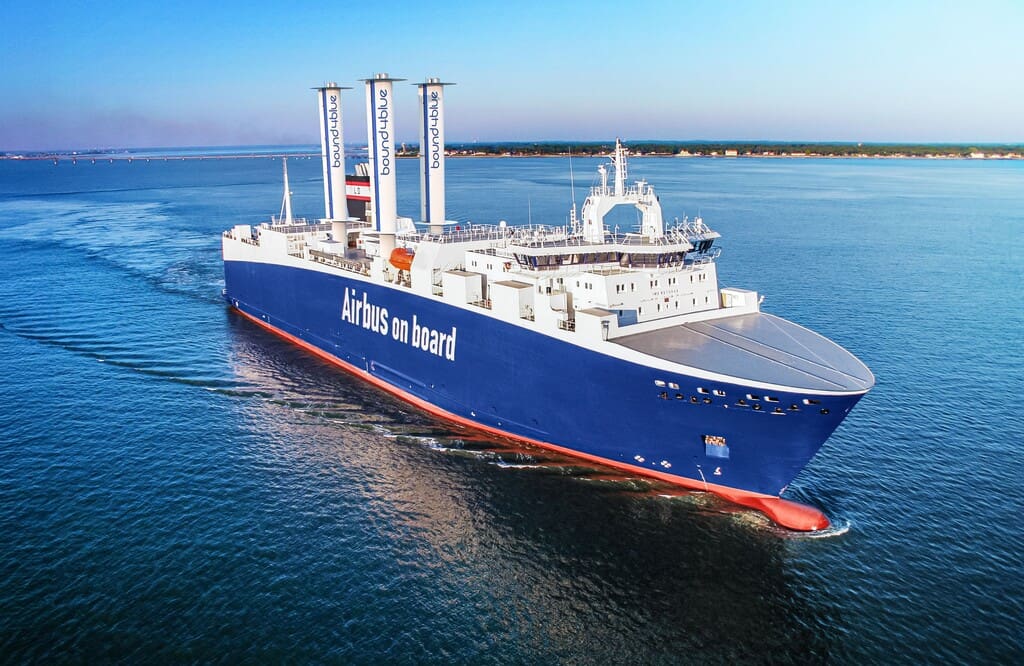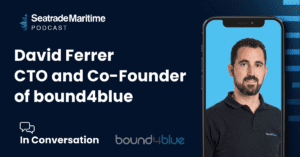Podcast/Radio
Suction Sails Episode – Seatrade Maritime Podcast with David Ferrer
Published
15 December 2023
We were honoured to be featured on Seatrade Maritime’s podcast, diving deep into the innovative world of wind propulsion with a focus on suction sails. David Ferrer, our co-founder and CTO at bound4blue, had the pleasure of being interviewed by Paul Bartlett.
Suction Sails Episode – click on the link below to access the podcast:
Here is a brief summary:
Paul Bartlett (PB) – interviewer
David Ferrer (DF) – interviewee
PB: Today, I’m delighted to speak with David Ferrer, co-founder and chief technical officer at bound4blue. The company has recently secured some notable contracts and completed a successful financing round. David, can you explain why, out of the four main wind sail technologies, bound4blue chose to focus on suction sail development?
DF: The primary factors were the ease of installation on vessels, especially existing ones. We needed sails that provided high lift yet were small in size, which led us away from wing sails due to their large dimensions. Safety was another concern, which ruled out kites due to their complexity. Between suction sails and Flettner rotors, both offering high lift and safety, we opted for suction sails due to their simplicity and lower operational costs.
PB: Are you confident that your suction sails will become the preferred option for ship owners and operators? If so, why?
DF: We believe our solution is the best, or we would have chosen a different path. Suction sails are smaller, making them easier to integrate into various vessels, and pose fewer issues with stability, deck space, and visibility. They are simple to operate, require minimal maintenance, and can be fully autonomous, presenting no significant safety concerns.
PB: How do new carbon intensity regulations and rules impact the adoption of wind sails?
DF: Tightening regulations, like the sulfur cap, EEDI, EEXI, CII, EU ETS, and Fuel EU, are significantly driving wind propulsion adoption. These regulations make wind propulsion a feasible option to meet emission standards and manage increased fuel costs.
PB: Can you discuss your pilot installations and order inquiries?
DF: We have four main installation projects: a general cargo vessel with Amasus – results will be validated by a third party (Lloyd’s Register) and published to the market, a ro-ro segment with Louis Dreyfus, a tanker project with Odfjell Tankers, and a bulker segment with Marubeni. We aim to publish performance results for these. The regulatory push has led to over 200 inquiries for performance analysis from different owners.




PB: Which vessels are most suitable for your technology?
DF: Our suction sails are adaptable to various vessels, including fishing, general cargo, ro-ro and ferries, bulkers, tankers, and LNG carriers. However, container ships and vessels with limited deck space or low operation times, like cable layers, may not find wind propulsion economically viable due to space constraints and limited usage. One thing is being able to install them from an engineering point of view and the other one if the payback is good enough.
PB: How do you manage installations across different global locations?
DF: While our production is currently in Spain, installations can be conducted worldwide. We plan to establish production facilities in Asia for easier distribution. Vessels can be prepped during regular dock visits and have sails installed later at convenient locations.
PB: What can you share about the financial returns and payback times of your technology?
DF: Payback analysis is complex due to varying fuel costs and CO2 pricing. However, new regulations like EEDI, EEXI, CII, EU ETS, and Fuel EU significantly lower payback times by addressing operational limitations and additional costs. Our analyses involve detailed discussions with ship owners to accurately assess payback.
PB: What are your priorities following your recent funding round?
DF: The funding will support technology development, pilot installations, scaling production, expanding our global service network and scaling up the team. We aim to meet the increasing demand and provide worldwide service from day one.
PB: Is an IPO a future possibility for bound4blue?
DF: While an IPO is an option for additional funding and investor exit, it’s not a current priority. Our recent funding round sufficiently supports our business plan for the next two years.
PB: What are your goals for bound4blue by 2030?
DF: By 2030, we aim for wind propulsion to be a well-known, standard, and trusted technology in shipping, akin to how main engines are perceived today. This acceptance would lead to widespread adoption, significant CO2 emission reductions, and overall industry transformation.
PB: Do you foresee wind power being integrated into new ship designs?
DF: Yes, the goal is for new ships to be designed “wind ready,” potentially equipped with sails from the outset. This trend is gradually emerging, and we anticipate it becoming the standard by 2030.
PB: Thank you, David, for your insights. We look forward to future updates.
DF: Thank you, it was great to have this discussion. Looking forward to our next conversation.

